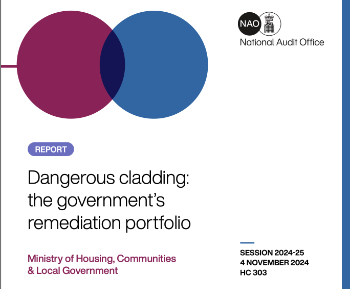Structural systems for high-rise reinforced concrete buildings
To help develop this article, click 'Edit this article'.
[edit] Introduction
Structure: Refers to a system of interconnected parts that safely transfer loads to the foundations. Eg. Bridge, Buildings and Towers.
Structural system: Refers to a system devised for safe transference of loads to the foundations through the building elements, such as frame structural systems.
Reinforced concrete construction is a construction method that uses reinforced cement concrete as the principal structural material. It can be used for both high and low rise buildings.
Structural systems for reinforced concrete might include the following building elements:
- Beams eg. tapered beam, spandrel beams etc.
- Slabs eg. ribbed slab, waffle slab etc.
- Columns eg. braced columns, slender columns etc.
- Foundations eg. piles, footings etc.
- Stairs, lift shafts etc.
- Shear walls.
Criteria that determines the type of the structural element to be used include:
- Aesthetics considerations.
- Types, distribution and intensity of loads.
- The total height of the structure
- Earthquake, wind and other environmental loads.
- Cost.
- Materials, equipment and skills availability.
- Ground conditions.
The following are structural systems commonly used in the construction of reinforced concrete high-rise buildings
[edit] Core and outrigger structural system
The core and outrigger structural system employs deep beams that are placed along the heavy reinforced concrete shaft that runs up the height of the building. The outrigger beam helps to resist the imposed lateral wind loads that act on the building developing the tension compression forces on the either sides of the building facades.
Outrigger locations help for provision of services for instance mechanical, electrical, plumbing, ICT and fire fighting services floor.
[edit] Tube structural system
Refers to a structural system that is made to have either columns, struts or shear walls in the perimeter of the high-rise building. This system can be made into different forms by altering the spacing of outer columns and the degree of openings in the outer shear walls. Tube structural system can be either lattice tube, perforated (hollowed) shell tube, framed tube, braced tube, bundle tube and lattice truss tube.
[edit] Braced frame structural system
Also called diagonalised structural system, this type of structural system uses braces to help increase the resistance of the structure against lateral loads. This improves the stiffness of the beams and columns against bending. It allows the use of slender members along the height of the building. Easy fabrication and fixing makes the bracing system more economical and preferred system in the erection of low and mid range high rise structures.
For more information see: Braced frame structures.
[edit] Rigid frame structural system
Refers to a system established with columns, beams and slabs joined together with rigid joints. Rigid Joints are also referred to fixed joints. These are joints with both moment resistance, shear resistance and axial forces. The rigid frame structural system differs to the tube system in that it has a long span between its columns whereas in the tube system the columns and walls are placed closer to each other.
[edit] Wall frame structural system
Refers to a structural system that is formed with a series of reinforced concrete walls placed close to each to support beams and slabs. Wall frame structures are stronger and able to resist greater lateral load.
[edit] Coupled wall system
A type of structural system that employs two walls connected to each other. Beams and columns act as connectors between the interconnected shear walls.
[edit] Hybrid structural system
Refers to the structural system that combines two different structural system layouts in a single structure.
[edit] Shear wall structural system
A structural system that employs heavily reinforced concrete walls that resist horizontal forces along their length, it also acts as bracing for concrete frames. It acts as a narrow deep cantilever beam carrying both lateral and gravity loads.
[edit] Cross wall structural system
Refers to a structural system in which the floors of a building span across a series of transverse load bearing walls. Cross walls may also be designed as fire compartmment walls.
[edit] Spine wall structural system
A type of a structural system in which a principal load bearing wall is erected parallel to the main axis of the structural layout of a building. The beams and columns originate from this central wall. It acts as a central deep cantilever beam.
[edit] Tube in tube structural system
Refers to a structural system that is built using two tube systems; the inner tube and the outer tube. The inner tube is used as services core for lifts and services ducts. The perimeter tube acts as the main structural element.
[edit] Bundled tube structural system
Refers to multi-unit cells structural system that employs the idea that the structure is made of tubes connected together. The system is good in resisting both lateral loads and torsion moments.
[edit] Related articles on Designing Buildings Wiki
- Braced frame structures.
- Concrete-steel composite structures.
- Concrete frame.
- Concrete vs. steel.
- Girder.
- High rise buildings.
- Lateral loads.
- Limit state design.
- Long span roof.
- Portal frame.
- Shear wall.
- Skeleton frame.
- Steel frame.
- Structural engineer.
- Structural steelwork.
- Superstructure.
- Truss.
- Tube structural system.
- Types of column.
- Types of frame.
- Types of structural load.
Featured articles and news
Delivering radical reform in the UK energy market
What are the benefits, barriers and underlying principles.
Information Management Initiative IMI
Building sector-transforming capabilities in emerging technologies.
Recent study of UK households reveals chilling home truths
Poor insulation, EPC knowledge and lack of understanding as to what retrofit might offer.
Embodied Carbon in the Built Environment
Overview, regulations, detail calculations and much more.
Why the construction sector must embrace workplace mental health support
Let’s talk; more importantly now, than ever.
Refurbishment for net zero; the BSRIA white paper
The everyday practice of tackling energy efficiency, fabric first, ventilation, air quality, and occupant wellbeing.
Sustainable construction design teams survey
Shaping the Future of Sustainable Design: Your Voice Matters.
Ensuring the trustworthiness of AI systems
A key growth area, including impacts for construction.
Foundations for the Future: A new model for social housing
To create a social housing pipeline, that reduces the need for continuous government funding.
Mutual Investment Models or MIMs
PPP or PFI, enhanced for public interest by the Welsh Government.
Stress Awareness Week ends but employer legal duties continue.
A call to follow the five Rs for the business and for the staff.
Key points and relevance to construction of meeting, due to reconvene.
Cladding remediation programmes, transparency and target date.
National Audit Office issue report on cladding remediation.
HBPT and BEAMS Jubilees. Book review.
Does the first Labour budget deliver for the built environment?
What does the UK Budget mean for electrical contractors?
Mixed response as business pays, are there silver linings?






















